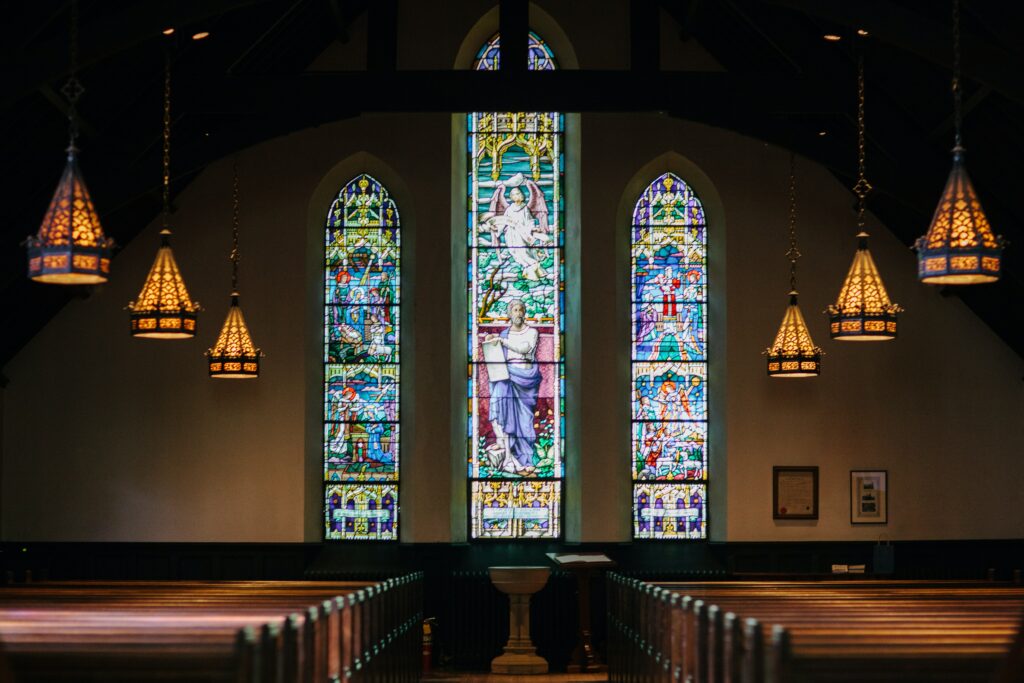
A year ago, COVID-19 was declared a worldwide pandemic. Schools, churches, and other organizations were shut down. Work moved online. And life as we knew it changed drastically.
At the time, most of us thought we were looking at a few weeks—possibly a couple of months—of these shutdowns. As it became clear they would last much longer, churches and ministries realized they needed to adjust their approach. They needed to innovate in order to continue to advance their mission.
Some did this quickly, moving services, small groups, and other initiatives online. Others took a little bit longer but eventually made the same changes.
We’re starting to see some things return to normal in 2021. But technology has been changing our culture for many years—the pandemic simply accelerated those changes—and the trends we’ve seen over the past year will undoubtedly continue to impact your ministry moving forward.
Let’s look at some of those trends and the lessons they hold for churches and ministries in the future.
COVID-19 Presented Challenges for Ministries
And let us consider how to stir up one another to love and good works, not neglecting to meet together, as is the habit of some, but encouraging one another, and all the more as you see the Day drawing near.
Hebrews 10:24-25 (ESV)
Ministry is relational and traditionally happens face-to-face: Missionaries live and work among the communities they serve. Churches meet together for worship and prayer and fellowship. Faith is strengthened through relationship with other believers.
When state and local governments responded to the pandemic with limits on in-person gatherings—and many individuals and families chose to stay home—it impacted ministries of all shapes and sizes. They had to figure out what connection and service might look like without being able to gather physically in the same space.
Similarly, and perhaps even more urgently, organizations had to adjust abruptly to the need to work remotely. Like for-profit companies, they had to navigate the waters around remote communication, video meetings, and working with kids underfoot.
When your staff is suddenly working remotely, your in-person conferences have been canceled, and gatherings are limited to a handful of people, how do you stay connected? How do you fuel genuine relationships without face-to-face interaction? How do you keep people from slipping through the cracks?
Churches, ministries, and other nonprofit organizations faced these challenges and more throughout 2020.

But It Also Presented Opportunities
While it’s easy to focus on the restrictions and challenges around COVID-19, these also presented opportunities. Internally, we often say “constraints fuel creativity.” With the disruption of all that was familiar, and a limited number of options remaining, organizations were forced to think outside of the box. They needed to innovate to continue connecting with their staff, their donors, and the individuals they serve.
Live streaming
Live streaming is not a new concept, and many churches were already streaming their services online before the pandemic. But stay-at-home orders meant more people were looking for an online service to attend each weekend.
In fact, in the early days of the pandemic especially, we knew people who listened to multiple services or “visited” new churches each week. We’ve seen churches cite online attendance stats that outpace what they saw during in-person services pre-pandemic. And churches have had a unique opportunity to reach individuals and families who were not comfortable visiting church in-person or who lived well outside of their geographic area.
In a season of uncertainty, fear, and loneliness, the availability of online teaching and worship presented a beacon of hope for many people.
Small group gatherings
Campus ministries like InterVarsity and Cru suddenly saw all their students sent home for online learning, disrupting their small groups and Bible studies mid-semester.
The restrictions didn’t just impact campus ministries, though. Bible Study Fellowship had been reluctant to embrace an online platform, focusing their ministry on in-person gatherings instead. But they found themselves needing to pivot in March of 2020 to move their classes online. This allowed them to finish out the 2019-2020 year online. It also provided an opportunity for groups to meet in-person or online for the 2020-2021 year, depending on local restrictions.
Along with just about every other organization in the world, small groups, Bible studies, youth group, and more moved to platforms like Zoom. While no one would claim it was ideal as the sole mode of communication, it provided a way for these groups to continue to meet “face-to-face” at a time when people needed connection and encouragement most.
Online events
Conferences such as Bayside Church’s Thrive Leadership Conference went virtual in the summer of 2020. Organizers recorded sessions via Zoom and uploaded those for participants to enjoy at home or in small group settings.
On the other hand, If:Gathering has always been a virtual event, encouraging women to gather groups of friends in their homes or churches to watch the livestream together. Last month, If:Gathering 2021 continued much the same as it always has, with more of a focus on individual viewers. With a strong social media presence to enhance individual online viewing, they’re clearly leading the way in this type of event.
More robust digital communication
Facebook groups, email newsletters, and text updates aren’t new. But the pandemic provided the impetus many churches and organizations needed to adopt these tools “now” rather than “someday.”
With the limitations introduced by COVID-19, many organizations moved their communication away from paper bulletins and bulk mailing to digital communication instead. Email, social media, and text can help churches and ministries connect with congregants and donors in real time, across geography, and with more personalization.
Online giving
In March and April of last year, churches and ministries saw a sharp drop in giving. Based on trends we’ve seen during previous economic downturns, many organizations prepared for the worst. Surprisingly, by June, giving had returned to its previous level or increased for two-thirds of all churches and ministries. This giving was fueled by the ease of digital giving, the growing needs in our communities, and stimulus checks.

What This Means for You Moving Forward
As life continues to return to normal, your organization will have to figure out which of these tools and strategies will remain part of your ministry toolbox and which will be discarded as you return to more traditional approaches. These things aren’t going to stop being important, even once things return to normal. COVID shone a light on the role of digital ministry within your broader mission.
Using digital media to enhance in-person events
Incorporating digital resources into physical events is not new. EveryCampus launched an online app as part of their campaign to cover every campus in the U.S. in prayer. The app included a digital guide participants could use while they prayer walked their way around campus. (In 2020, they shifted to digital prayer walks.)
Churches and other ministries can enhance in-person events with technology. This includes things like incorporating church prayer chains into your mobile app, setting up digital kiosks in place of weekly bulletins, or connecting with conference attendees on social media. Facebook groups, weekly newsletters, and video messages are all ways your organization can use digital communication to strengthen relationships.
Meeting people where they’re at
Many church communities are anxious to return to in-person services. At the same time they’re also juggling concerns about the risks presented by these gatherings. And the newly developed online communities still provide a valuable avenue to ministry.
For those who are not able to return to in-person service (for myriad reasons, whether it’s concerns about COVID or being otherwise housebound), virtual services with online chat options have provided a way for them to stay connected to their congregation on Sundays.
And still other churches have built thriving digital ministries. Restore Community Church in Kansas City is an example of this. Seeing the fruit from their online services, they recently hired a digital pastor to continue to lead this area of ministry even as they return to in-person services
Don’t forget accessibility
In the early days of the pandemic, your first priority may have simply been getting things online. Accessibility might not have been on your radar as you scrambled to get something in place. But, there’s no excuse for overlooking accessibility concerns at this stage. At its core, paying attention to accessibility is a way to care for people. It doesn’t just benefit those with disabilities or unique needs; accessibility makes the internet better as a whole.
Online giving is a necessity
In 2021, there’s no reason your church or organization shouldn’t be able to accept credit cards through your website, app, or even text. This means making the process easy and seamless and offering a full range of transactions such as automatic recurring donations. While the idea seemed foreign 15-20 years ago, digital transactions have become a normal way of life thanks to apps like Venmo, CashApp, and Zelle. Supporters expect the same ease of giving for their tithes and donations.
We continue to look forward to the day that life returns to normal. But even as that happens, digital engagement is only going to get more important. 2020 was a year of connecting with friends, family, and organizations using digital tools. Those same tools and strategies can continue to enhance in-person interactions. Now’s the time to take all you’ve learned this past year and build on it to create a well-rounded, robust ministry in the future!